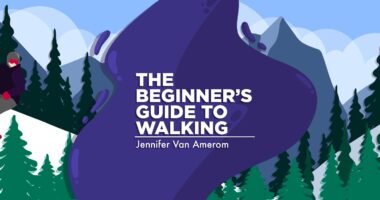Playing tourist in Toronto reminded me that it’s not very accessible
Trying to navigate my city with NMOSD revealed a difficult truth

I was born in a small town two hours away, but Toronto has been my home for more than two decades, and it’s where my husband and I are raising our daughter. Recently, while hosting one of her schoolmates for the week, we decided to play tourists in our own city.
With our CityPasses in hand, we set out to explore Toronto’s major landmarks. But what was meant to be a fun adventure ended up serving as a difficult reminder: Toronto isn’t very accessible.
I live with neuromyelitis optica spectrum disorder (NMOSD), a condition that affects my central nervous system. This means that back pain, fatigue, and numbness are constants, varying only in intensity throughout the day. I have an accessible parking permit that I rely on when my symptoms flare, but lately, even using that feels like navigating a maze designed without the disabled in mind.
The city seems to have significantly reduced the number of no-parking zones where accessible permit holders can park, eliminating spaces often situated near hospitals and medical clinics. This change may have been intended to reduce traffic congestion, but it also feels like a quiet form of discrimination. For permit holders like me, hospital appointments before 9:30 a.m. or after 2 p.m. become nearly impossible because the few remaining parking spots outside those hours are either in no-stopping zones or are already claimed by the time I arrive.
Beyond driving, public transit isn’t a viable solution for many NMOSD patients like me. On crowded subways, physical contact isn’t just inconvenient, it’s painful. When my skin feels like it’s on fire, a stranger’s accidental shove or brush can almost reduce me to tears, not to mention the possibility of falling when my balance isn’t there.
Navigating subway stations is a challenge, too. Should I decide to use an elevator instead of attempting two flights of stairs, they are hard to find, painfully slow, and cramped. Plus, these elevators fit only one or two wheelchairs at a time. Even at Union Station, one of the busiest transit hubs in the city, accessibility feels more like an afterthought than a solution. The elevators are tucked in far corners without enough signage.
We encountered further challenges at major tourist attractions. At the iconic CN Tower, I stood in the shorter line designated for people with strollers or disabilities. An attendant immediately told me I was in the wrong place. I explained my condition, but it was clear they were unfamiliar with invisible disabilities, as they expected to see a wheelchair, cane, or some other visible indicator of struggle. Instead, I stood there being questioned, with pain and humiliation rising in equal measure.
While the Toronto Zoo offered some accessible features, I still faced challenges. The paths are long and steep, with uneven terrain and features like log bridges that aren’t wheelchair-friendly. Although the Zoomobile offers transport between different sections of the park, the stops are far from most animal enclosures, making it an impractical option for anyone with mobility challenges.
I don’t want this to be a list of complaints, because I do love my city. But I want my daughter to grow up in a city that embraces all of its residents, not just those who move through the world without mobility challenges or chronic pain. I want our landmarks to be places of pride, not quiet reminders of exclusion. Improving accessibility doesn’t just serve people like me; it creates a better, more compassionate city for everyone. It allows us to show our children, our visitors, and ourselves what Toronto really stands for. Yet, despite my love for it, many of us must navigate through a city that wasn’t designed with us in mind.
Note: Neuromyelitis News is strictly a news and information website about the disease. It does not provide medical advice, diagnosis, or treatment. This content is not intended to be a substitute for professional medical advice, diagnosis, or treatment. Always seek the advice of your physician or other qualified health providers with any questions you may have regarding a medical condition. Never disregard professional medical advice or delay in seeking it because of something you have read on this website. The opinions expressed in this column are not those of Neuromyelitis News or its parent company, Bionews, and are intended to spark discussion about issues pertaining to neuromyelitis optica spectrum disorder.







Leave a comment
Fill in the required fields to post. Your email address will not be published.